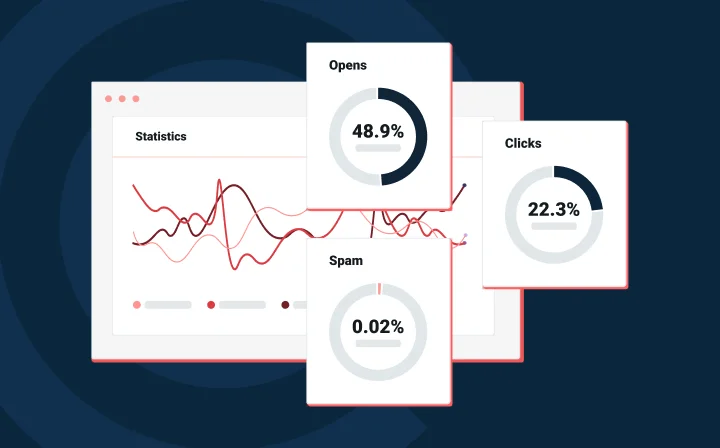Deliverability
Spam filters & deliverability: What mailbox providers expect from email senders

Deliverability

Spam is everywhere. Literally.
You’ve probably noticed this yourself, just by looking through your inbox, but what actually gets through to you is a minimal fraction of what gets sent every day. Mailbox providers see a colossal amount of spam – or worse, fraudulent or phishing – emails coming their way. These email spam filters often feel like obstacles for legitimate senders trying to reach their subscribers.
But what if we told you spam filters are actually your allies in maintaining email as a trusted communication channel?
Every day, Gmail alone blocks more than one hundred million phishing emails that try to steal information or money from Gmail users.
According to email expert LB Blair, “91% of all hacking attempts are initiated via email.” This staggering statistic demonstrates why robust spam filtering is critical for protecting users.
Without these protections, email could become as unreliable as phone calls have become – where people ignore unknown numbers due to poor spam filtering. Gmail reports blocking 99.9% of spam, phishing, and malware from reaching inboxes.
No matter the actual volume of phishing or spam emails that the mailbox providers are receiving, what we can be certain of is that it is their responsibility to protect their users against those unwanted (and sometimes dangerous) emails.
It can be easy to be frustrated by spam filters, but they do perform some important functions.
You’re probably thinking the above doesn’t matter to you. You’re not a spammer, and you’re certainly not a fraudster. Your emails are legitimately sent to your customers or subscribers. And more importantly, they bring value to your audience.
However, modern spam filters use sophisticated analysis across multiple data points to make decisions about email delivery. Here are some of the key categories they look at, and the individual points you can monitor or influence within your email program.
Infrastructure Analysis:
Engagement Metrics:
Content Evaluation:
There are many factors that come into play when we’re talking about email deliverability. But if there’s one that is very important, it’s how your audience reacts to your emails.
“Engagement is your lifeline to reputation as a sender.”

Mailbox providers prioritize delivering emails their users want to receive.
If there is one topic in the email service industry that pretty much everyone agrees on: authentication is not optional
Email authentication is the way to confirm to mailbox providers that you are who you say you are, and that your emails haven’t been tampered with in transit to your recipient mailboxes. In this day and age, it’s just good manners, really. It doesn’t take a long time to configure your SPF and DKIM records, and it shows that you know your basics in terms of email good practices. On top of that, it makes your email traffic more legitimate.
Plus, authenticating your emails properly will be a great first step to adding a DMARC policy on your sending domain, and maybe even a BIMI record.
This one is probably hard to grasp, but it’s very relevant when it comes to the email traffic the mailbox providers are receiving every day.
Consistency in sending patterns helps spam filters understand your normal behavior. Sudden changes in volume or frequency can trigger suspicion since that’s often associated with compromised accounts.
It doesn’t matter if you’re sending every single day, or every week, or two times a month. Because such sends are predictable from the internet service providers’ perspective. “Look, they’ve sent those past four campaigns once a week in the last month. We can expect the fifth one next week.”
It was a best practice in the past, and it still is right now. Don’t send emails to invalid addresses. It’s that easy.
When your emails get flagged as spam, follow these three steps:
1. Collect Data
2. Assess Root Causes
3. Implement Solutions
Using email validation software, or simply adding a double opt-in process to your newsletter flow, will prevent your lists from collecting invalid addresses.
In the wise words of LB Blair, spam filters might seem like our opponents, but really they’re the immune system protecting email. When you align your sending practices with spam filter expectations, everyone wins.
Now you know: There are a lot of factors to consider when it comes to email deliverability. We’d love to have a quick answer to everyone’s favorite question – How do I make sure my legitimate email doesn’t land in the spam folder? – but the truth is… deliverability is complicated. By understanding and working with spam filters rather than trying to bypass them, legitimate senders can achieve better deliverability while helping maintain email as a trusted channel for everyone.
Want to learn more about email deliverability and how you can optimize your sending? Subscribe to our newsletter for the latest and greatest in all things email.